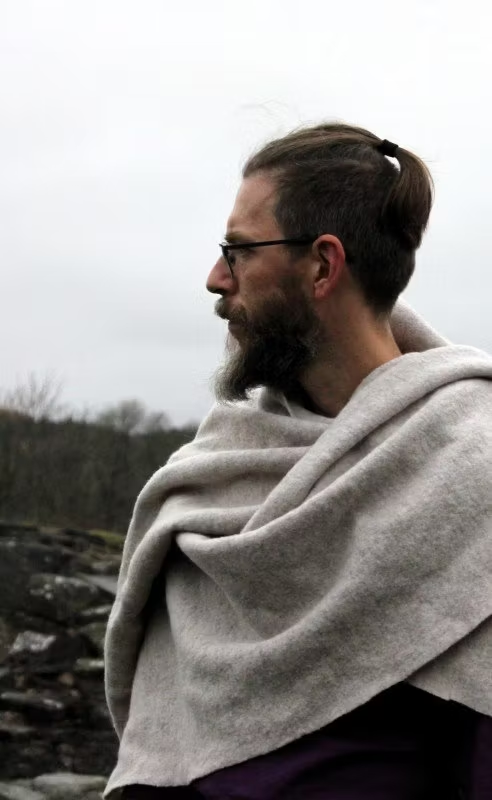Varukorg
Rabatt:
0,00 SEK
Fallorka Design and Company |10/08, 2025

Did Vikings celebrate Halloween in the Viking Age?
Austrfararvísur – a journey written in verse
There is a writing from a poet in the 11th century, (year 1019) he was sent from the Norwegian court (King Olaf II) to Sigtuna. He wrote down his journey in verse which he called Austrfararvísur. When he passed through Värmland to get lodgings, he was surprised. Sigvat, as he was called, he was not allowed to enter! The landlady gaped at the door and said she feared Odin's wrath if she let Christian men in; an álfablót was held in their home.
Odin, as you know, was a god in Norse mythology, and in this context the housewife feared Odin's wrath because he is usually also called the ghost queen, i.e. the lord of ghosts. Revenants are the dead who walk again, and draugr are the dead who refuse to die, making them so overpowering in their strength that they can defeat humans. Thus, to stay on good terms with the dead ancestors and Odin, she could not invite strangers to the alpha blot of the household.
What is an álfablót?
A blot is a gift, that you sacrifice something to the higher powers. The word is also believed to be strongly associated with the word "sprinkling", as in sprinkling god statuettes with blood from a slaughtered animal or sprinkling oil, food, grain, etc.
In Gylfaginning two kinds of elves are described: Ljósálfar (light elves) Dökkálfar (black elves). The light elves are more beautiful than the sun and the black elves are blacker than tar. The black elves live in the underworld. It's hard to say exactly what the elves are for some, but what we know for sure is that they are not human. They are associated with dead men and the god Frey, precisely because Frey's home is called Alfheim. The word Alf is directly male, thus a masculine word, and means father. Perhaps it could mean that only certain deceased men ended up in the divine abode? It is also said that highly valued ancestors became Alfer when they died. Hence, could elves be the saints, highly esteemed deceased, that we celebrate on All Saints' Day? So you could say that at Alfablot the dead are celebrated, those who were closest to the family.
Disablót – a tribute to ancestors & foremothers
Female progenitors could turn into mists upon death. In eastern Scandinavia, Disablót was held in the spring, while in Iceland it was held instead in the fall due to local traditions. By paying homage to one's forefathers and foremothers, it is assumed that one received protection, on the other hand, it was dangerous to deal with these beings if one was outside the cult, for example a Christian; elves, or elves, (in the 18th century the Swedish changed from alfer to elves) are described as strange beings to those who do not have a family relationship with them. So one can imagine that in the eyes of the Christians, supernatural beings were celebrated, but actually it was the ancestors.
Short excerpt from Kormak Ögmundarson's saga
We end this post with an excerpt from Kormak Ögmundarson's saga (set in Iceland 9th century, written approx. 13th-15th century). Participate in the ancient Norse tradition in a tribute ceremony to our fathers at Birka on the last weekend in October - if you make a party for the elves, they can heal you from injuries:
“Þorvarði is slowly recovering and when he can get up and move he goes to Þórdís and asks her what would be best for his health. She replies: 'There is a hill not far from here where the elves live. Get the bull that Kormákur killed and spread the bull's blood on the hill outside, and make a feast for the elves from the slaughter - then you will be healed.''